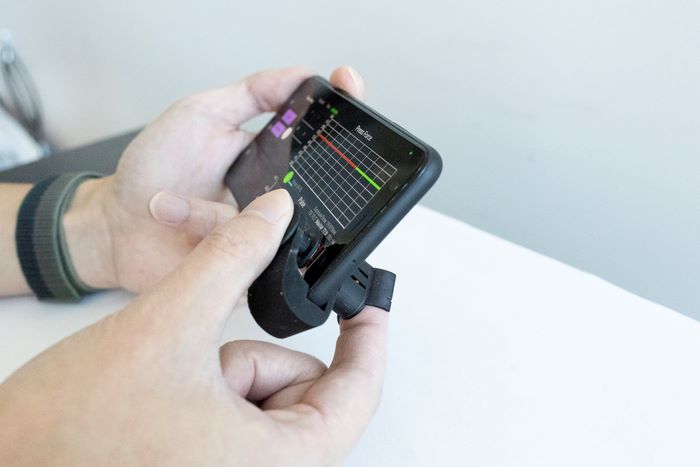Engineers at the University of California San Diego have developed a simple, low-cost clip that uses a smartphone’s camera and flash to monitor blood pressure at the user’s fingertip. The clip works with a custom smartphone app and currently costs about 80 cents to make. The researchers estimate that the cost could be as low as 10 cents apiece when manufactured at scale.
The technology was published May 29 in Scientific Reports.
Researchers say it could help make regular blood pressure monitoring easy, affordable and accessible to people in resource-poor communities. It could benefit older adults and pregnant women, for example, in managing conditions such as hypertension.
“Because of their low cost, these clips could be handed out to anyone who needs them but cannot go to a clinic regularly,” said study senior author Edward Wang, a professor of electrical and computer engineering at UC San Diego and director of the Digital Health Lab. “A blood pressure monitoring clip could be given to you at your checkup, much like how you get a pack of floss and toothbrush at your dental visit.”
Another key advantage of the clip is that it does not need to be calibrated to a cuff.
“This is what distinguishes our device from other blood pressure monitors,” said Wang. Other cuffless systems being developed for smartwatches and smartphones, he explained, require obtaining a separate set of measurements with a cuff so that their models can be tuned to fit these measurements.
“Our is a calibration-free system, meaning you can just use our device without touching another blood pressure monitor to get a trustworthy blood pressure reading.”
To measure blood pressure, the user simply presses on the clip with a fingertip. A custom smartphone app guides the user on how hard and long to press during the measurement.
The clip is a 3D-printed plastic attachment that fits over a smartphone’s camera and flash. It features an optical design similar to that of a pinhole camera. When the user presses on the clip, the smartphone’s flash lights up the fingertip. That light is then projected through a pinhole-sized channel to the camera as an image of a red circle. A spring inside the clip allows the user to press with different levels of force. The harder the user presses, the bigger the red circle appears on the camera.
The smartphone app extracts two main pieces of information from the red circle. By looking at the size of the circle, the app can measure the amount of pressure that the user’s fingertip applies. And by looking at the brightness of the circle, the app can measure the volume of blood going in and out of the fingertip. An algorithm converts this information into systolic and diastolic blood pressure readings.
The researchers tested the clip on 24 volunteers from the UC San Diego Medical Center. Results were comparable to those taken by a blood pressure cuff.
Next steps include making the technology more user friendly, especially for older adults; testing its accuracy across different skin tones; and creating a more universal design.
– Eurekalert







